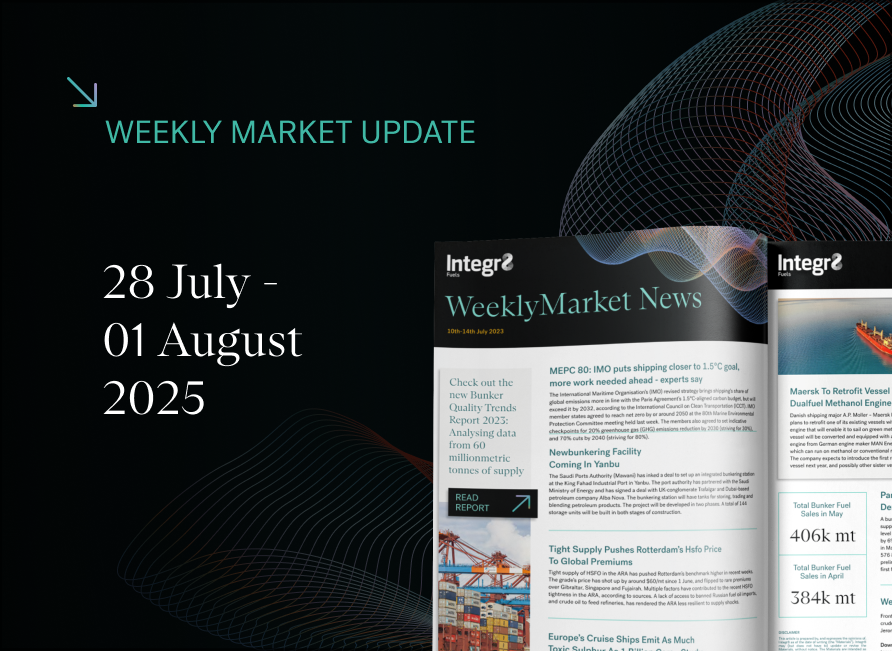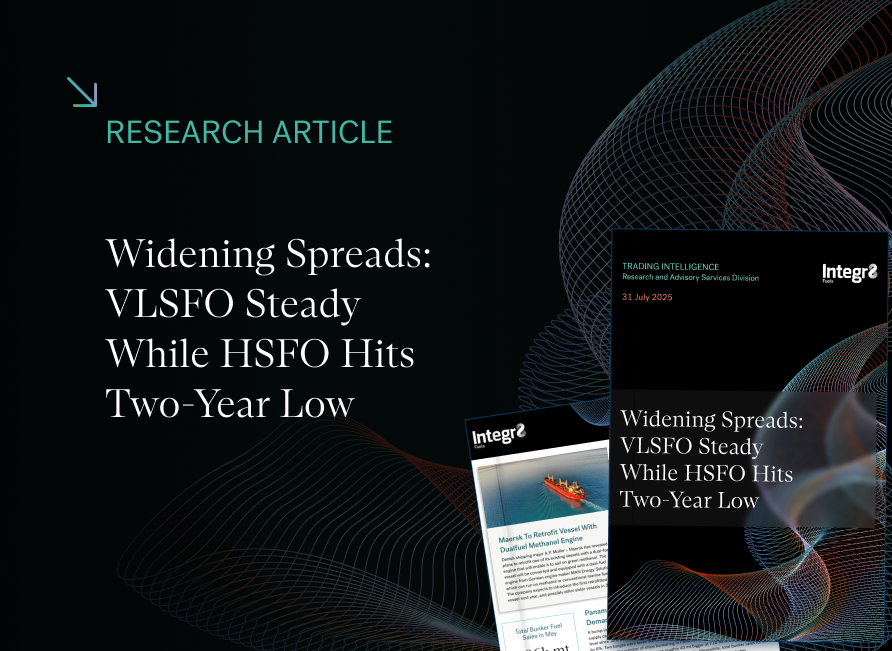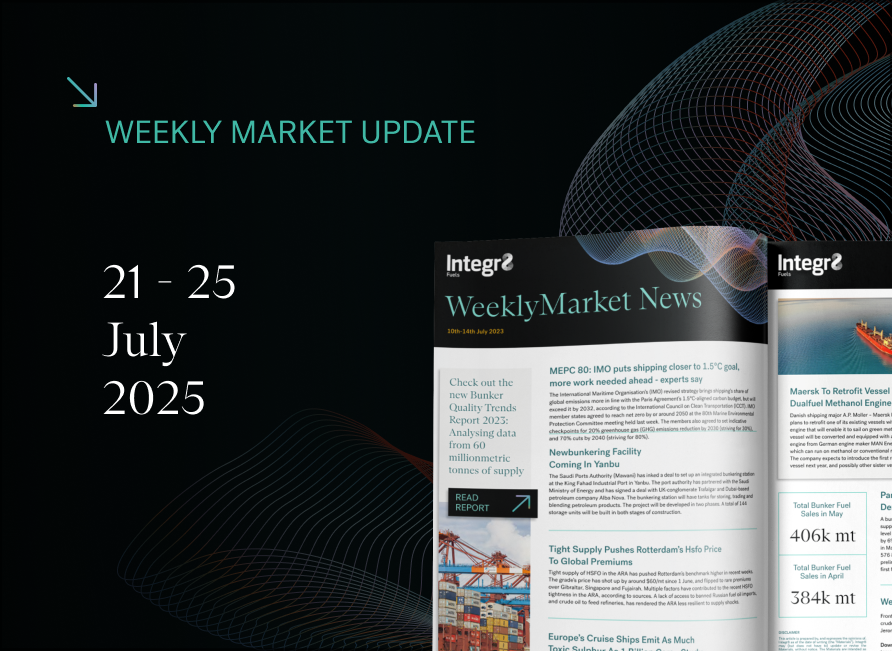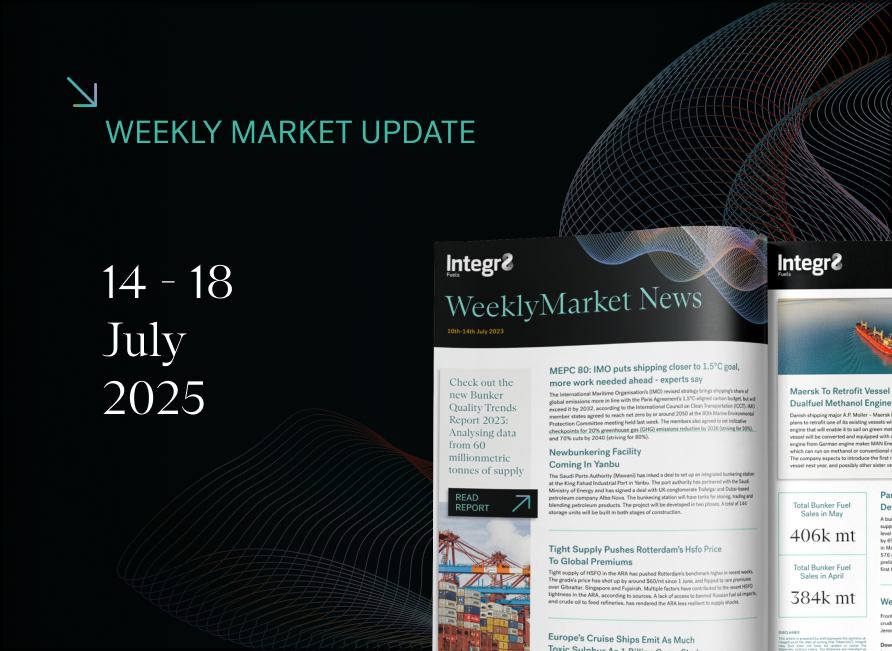VLSFO: better quality but watch for critical parameters
It has been over a month since the IMO2020 regulation came into force and there are mixed views on how the transition has gone so far. Some participants claim the switch has gone smoothly, while others highlight the constant quality issues with the VLSFO blends.
As we moved through the later part of December and now fully into 0.5% sulphur compliance, so VLSFO prices have risen sharply, not only in absolute terms (up 25- 35% since early December) but also higher relative to crude oil. The pricing of VLSFO reflects all the issues around the market, including demand and availability (or lack of it). One fallout is that reported prices for VLSFO are now extremely close to MGO, with the difference now typically less than $20/ton, compared with VLSFO ‘discounts’ anywhere from $40/ton to $120/ton just one month ago.
Integr8 Fuels’ analysis of global fuel quality data covering November 2019 to January 2020 shows the improvement in the overall fuel quality of VLSFO. However, there are concerns about the continuing decrease in viscosity and the increasing likelihood of more sedimentation and stability issues.
Despite VLSFO having only marginally more off-specs than HSFO, it is the critical quality parameters that are often recorded off-spec in VLSFO, potentially causing technical problems on board vessels.
While the majority of ports recorded very few off-spec fuels in January, several locations were particularly affected.
Fuel quality analysis
For the analysis, Integr8 Fuel’s live global fuel quality database was used. It receives over 400 results daily and has accumulated over 38,000 ISO8217 test results since November 2019, which have allowed for a detailed insight into fuel quality and associated issues.
It is worth mentioning, that there are limitations in the scope of ISO8217 testing, but this remains the main marine bunker fuel quality test and as such can help understand why there are such mixed views about VLSFO on the market.
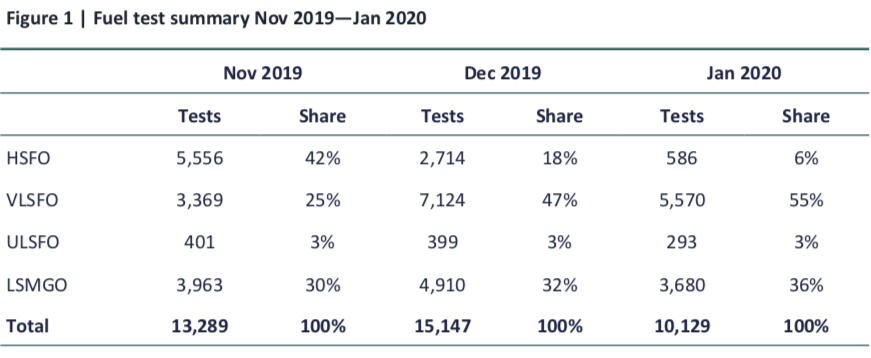
Figure 1 summarises the tests the analysis is based on, and shows a representation of how quickly HSFO has been losing its market share to VLSFO and LSMGO. VLSFO now constitutes the majority of the bunker fuel supplied, followed by LSMGO, HSFO and ULSFO.
While switching to LSMGO is rarely associated with problems, particularly in modern vessels, switching to VLSFO has definitely highlighted a number of issues.
Naturally, quality issues are associated with a higher number of blends on the market, where at least one parameter is found off-spec.
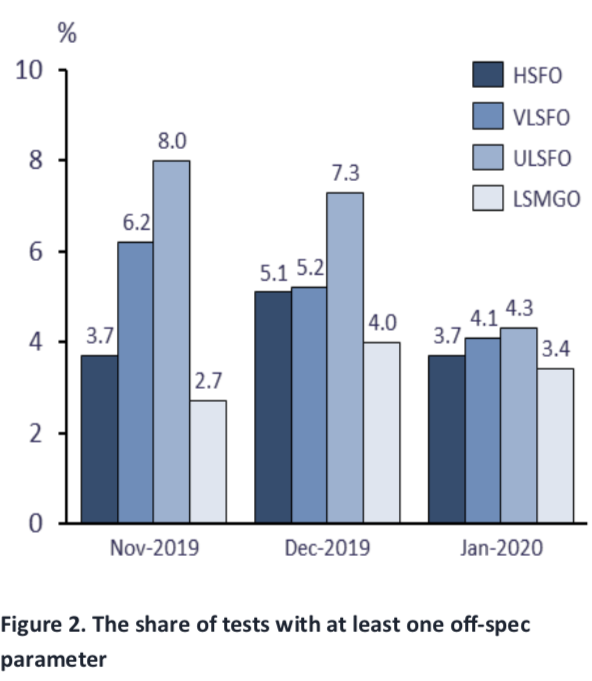
However, Figure 2 shows that the number of off-spec VLSFO tests was only marginally higher than HSFO (and lower than ULSFO) in January and has been declining over the past three months.
This gives an impression that VLSFO is becoming less problematic, contrary to the news on the market.
In further analysis, January off-specs were broken down by parameter and the severity of each parameter being off-spec.
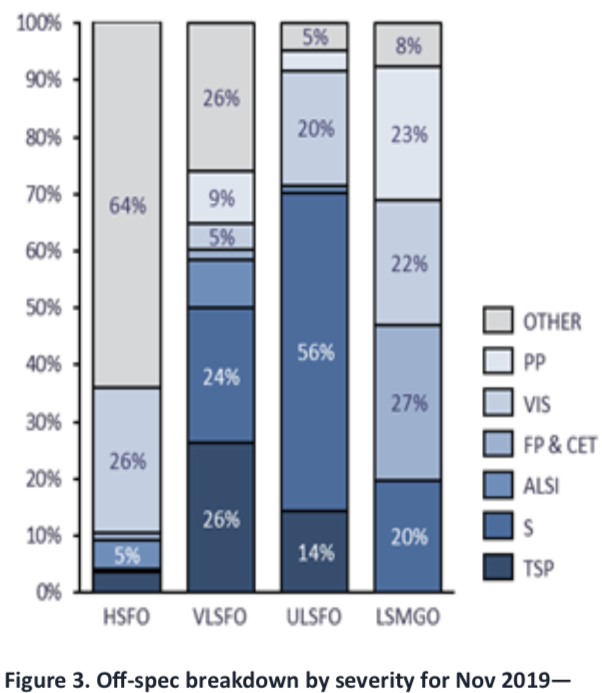
This is summarised in Figure 3 with critical parameters coloured in red, less critical in yellow and least critical in green. Critical VLSFO parameters like sulphur, TSP, ALSI and flash point jointly share around 60% of all VLSFO off-specs, compared with around 20% for HSFO.
It is worth mentioning that on off-spec critical parameters VLSFO is very similar to ULSFO, which is blended to an even tighter sulphur limit.
Indeed the consequences of these parameters being off-spec are much more serious, including damage to machinery, filter blockages, the inability to burn bunkers or even de-bunkering—all these are more likely to result in claims and end up in the news headlines.
On the other hand, off-spec (within reason) pour point, water content, density or viscosity can be dealt with on-board and are less likely to lead to a major problem, which has often been the case with HSFO.
On the port level, the majority of locations presented very few VLSFO issues. However, several ports in January were particularly prone to off-specs on critical parameters (Figure 4), including several ports in the Mediterranean, North America and the Caribbean.
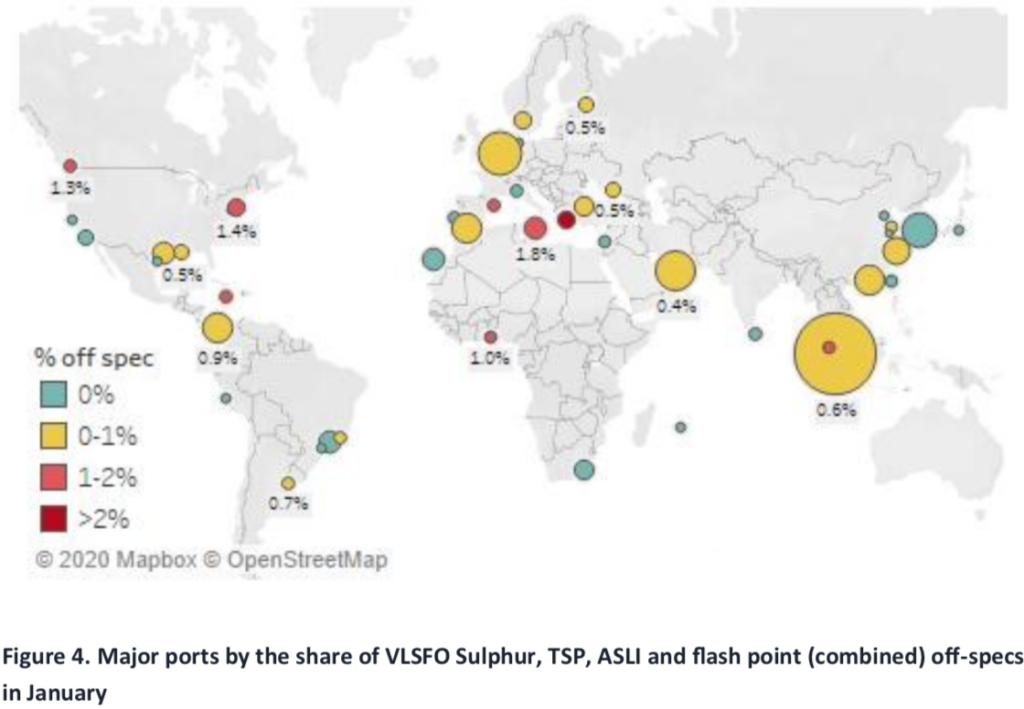
As the VLSFO quality situation is dynamic, it is very important to stay up-to-date with the changes in the market. Integr8 Fuel’s global fuel quality database allows us to monitor in near real-tme the changes in fuel quality and be proactive in our buying strategies in order to procure the best quality fuels for our customers.
Anton Shamray
Senior Research Analyst
P: +207 4675 856
E: Anton.s@integr8fuels.com


Contact our Experts
With 50+ traders in 12 offices around the world, our team is available 24/7 to support you in your energy procurement needs.

